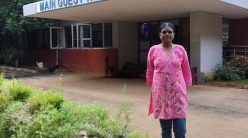Radhika Muthukumar gave CONNECT a behind-the-scenes look at what it takes to supply water to the campus community and treat the wastewater it produces
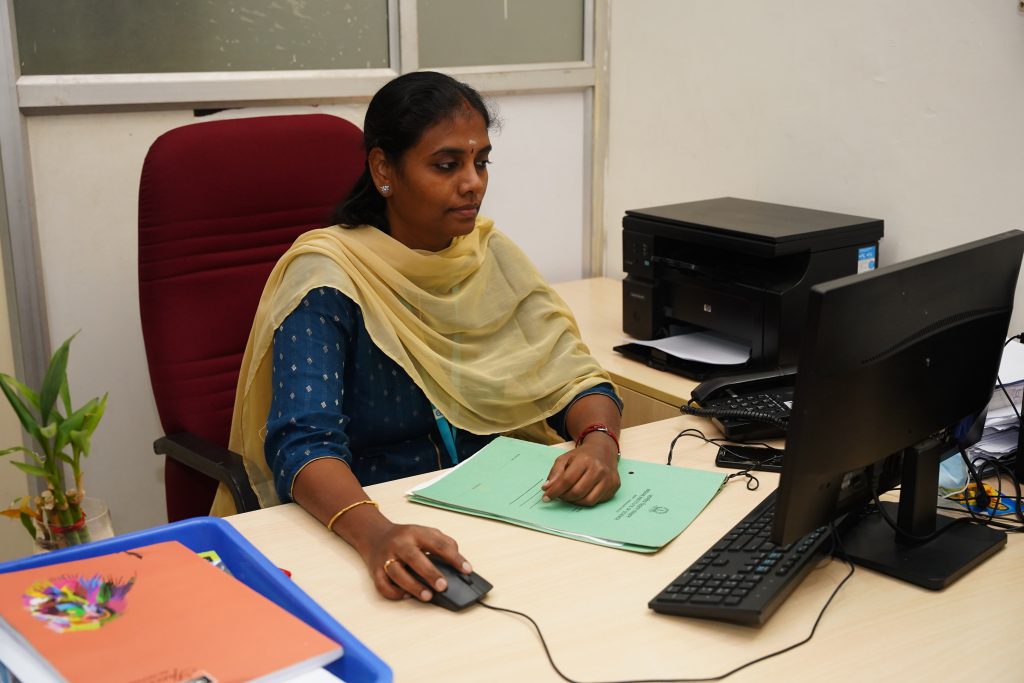
A few metres down the road from IISc’s main gate is an 80-year old building that was designed by Otto Koenigsberger, an architect who left Nazi Germany and worked for the Mysore State in the 1940s. Its wing-like porch canopy is quite distinctive, and embedded in its central section is what was once India’s first wind tunnel. Today, this vintage building is also the home of IISc’s Centre for Campus Management and Development (CCMD), where Radhika Muthukumar works.
Radhika is an Assistant Project Engineer at CCMD. She joined IISc in April 2019 after working at the National Thermal Power Corporation Limited (NTPC) for more than 13 years. At CCMD, she is responsible for overseeing the campus’ water supply systems as well as the Sewage Treatment Plants (STPs).
Today is the first day of August and a Monday. Radhika begins work at around 9.30 am by checking her emails for water-related complaints from the campus community. The Institute has an online portal called Samadhan for complaints related to civil, water or electrical issues. An external agency has been deputed to respond to routine problems raised through the portal. Any major issues that they are unable to handle get forwarded to Radhika. She typically gets about 5-10 complaints in her inbox a day, mostly related to water leakage.
Radhika’s actual day begins much earlier. She and her husband get up at 4.30 am to send her 5-year old son and 10-year old daughter to school by 7.30 am. Once the kids are off, she gets on her scooter and rides down to the campus from her home near the BEL circle. Today, her daughter is unwell and has stayed home from school, so in between responding to emails, she calls and checks in with the nanny who’s at home.
Radhika’s cubicle is on the ground floor of the CCMD building. Past the entrance to the left is the office of the Project Engineer and Estate Officer (PE), who heads the Centre, and beyond this is a passage on the left leading to the cubicles where the assistant project engineers sit. There are about 30 staff members working at CCMD. Apart from the project engineers, there are also administrative staff members, project associates and technical
assistants on contract.
At CCMD, Radhika manages various civil engineering projects, mostly related to water supply. This includes reviewing the project specifications, preparing the plans, uploading tender documents, working with contractors, monitoring the progress of projects, and ultimately seeing the project to its completion. An external agency called Eco Protection Engineers has been recruited by the Institute to manage the water supply round the clock, with about three or four staff members in each shift, who report to a site engineer.
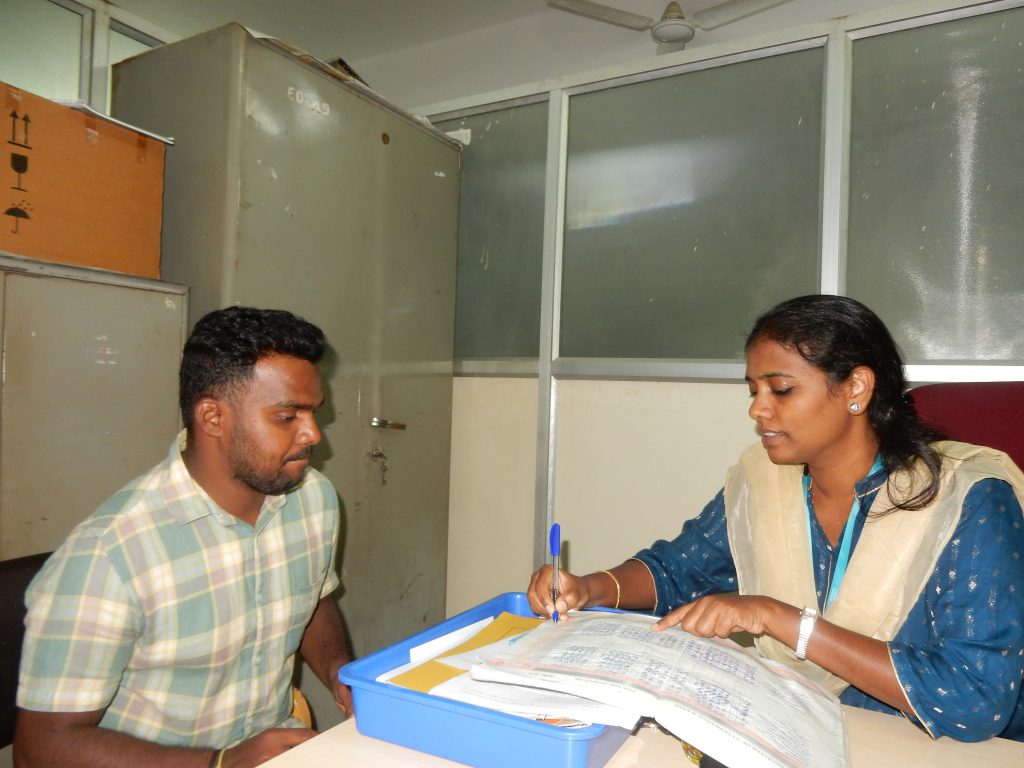
(Photo: Ranjini Raghunath)
Sachin Kumar, one of the site engineers, stops by. Radhika discusses with him the pending complaints from Friday and informs him of a new complaint raised by one of the residents in the faculty quarters. She also reminds him of two estimates that need to be prepared for upcoming waterproofing and drainage related work at the Biological Sciences and the Physical Sciences buildings. She then calls the nanny again and learns that her daughter has been vomiting, so she asks the nanny to give her some lemon juice.
This morning, Radhika also gets a visit from staff members at the nursery. B Sridhar, who was in charge of the campus nursery, retired the previous week, so she has temporarily been assigned its charge. The staff members brief her about the number of people who work at the nursery, and about what they do. Radhika’s workload has increased during the past few weeks. One of the other assistant project engineers who was temporarily deputed by the Public Works Department went back to his organisation, and the projects he was handling were distributed among the other engineers. Apart from her own work, Radhika is now also managing some of the construction projects near the D gate.
During the day, she also makes it a point to go around the campus, visiting various pump houses and the STPs. There are about 35 pump houses which supply water to most of the buildings. The Institute’s water consumption is enormous – about 2 million litres per day – which is almost entirely supplied by the Bangalore Water Supply and Sewerage Board (BWSSB), and is routed to various departments and residences through these pump houses. Around 11 am, she sets off.
Pumping water

Mechanical Engineering (Photo: Ranjini Raghunath)
The first visit is to the one of the oldest pump houses nestled between the Department of Organic Chemistry and the Interdisciplinary Centre for Water Research. It is the second largest on campus, with pumps of 10 HP capacity supplying water to several departments on this side of the campus as well as the housing colony. The reservoir next to the pump house is capable of holding about 4 lakh litres of water. There is one technical assistant on site, cleaning. He also keeps watch over the sensors that display the water and energy levels.
Next is a visit to the campus’ largest pump house which is located at the southeast end of campus, where the Department of Mechanical Engineering’s old Thermal Power Station used to be. There are two pumps of 40 HP capacity and two large reservoirs that can hold about 3 lakh litres of water each. There’s also an overhead tank to which the water is pumped before being supplied to the nearby departments. When Radhika joined, several of these reservoirs didn’t have proper concrete covers; she took the initiative to get them all fully covered, she explains. A direct line from the BWSSB supplies water to these reservoirs.
The BWSSB staff have always been supportive and helpful, Radhika says. They are usually prompt in responding when there’s an issue with water supply or when the subway gets flooded during the rainy season. Passing the subway on the way back to CCMD, and past the demolished Prakruthi canteen, she remarks that she misses the vibrant environment the eatery used to offer for people to sit and chat.
Before heading back to CCMD, she stops by the building behind the Students’ Council which houses a centralised water supply control room fitted with SCADA (Supervisory Control And Data Acquisition), a software platform that enables continuous data collection and monitoring. She explains that about 30 pump houses have been fitted with automatic sensors that feed data about water levels into this system, which appear on a computer screen that one of the site engineers constantly monitors. There are also automated alarms that go off when the water supply gets cut off. This was completed as part of a Rs 4 crore water management project launched in 2019 by IISc. The second phase of this project will start soon, she says.
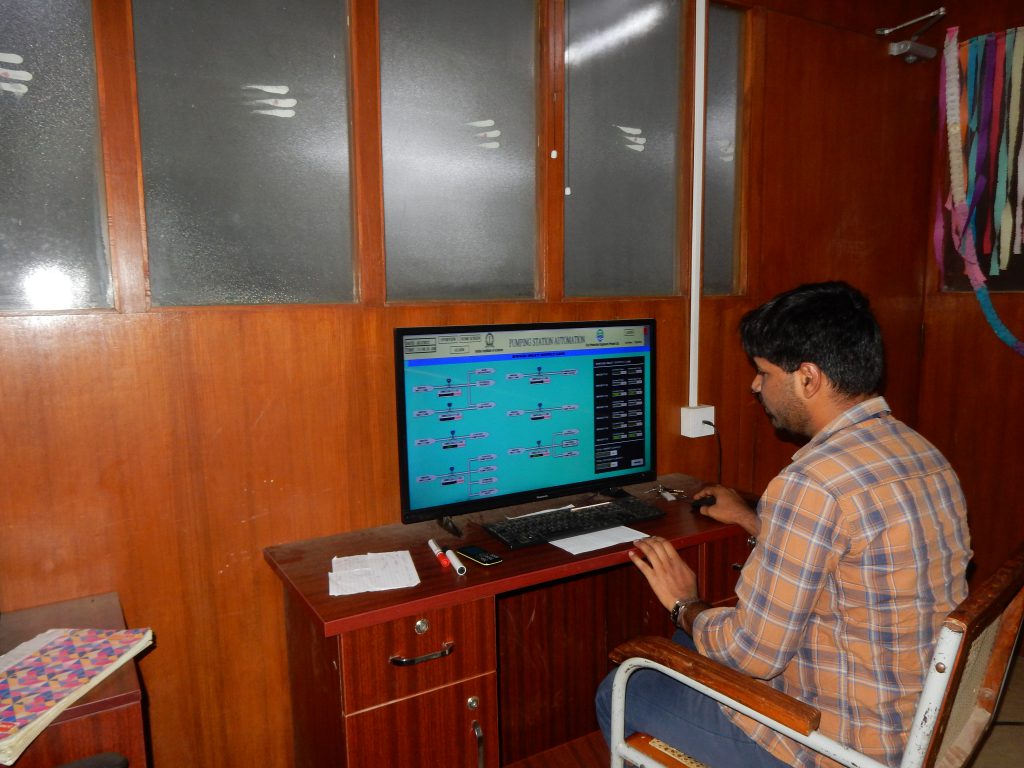
houses are monitored (Photo: Ranjini Raghunath)
Back at her desk, the nanny informs her on the phone that her daughter is still a bit feverish. One of the site engineers then comes by with a work order drawn up for building and painting a partition wall at the Chemical Sciences building. She asks him to get some clarity on the area mentioned before putting it up for approval by the PE.
For small projects like these, Radhika explains, CCMD has the discretion to appoint any registered contractor. For larger projects that cost more than Rs 2.5 lakh, a bidding system has to be followed where tenders are called for from authorised agencies via the Government’s centralised eProcurement System, and the lowest bidder needs to be awarded the contract. One such project coming up is the second phase of the water management project she mentioned. It will involve not only replacing some of the old water pipes and installing sensors in the remaining pump houses, but also fitting smart water meters across campus. When Radhika joined IISc, she noticed that there were some errors in the bills being paid by IISc to BWSSB. Due to her efforts and consistent follow-up, the Institute was able to significantly reduce the amount paid against the water bill, she says.
Radhika usually cooks and brings her own lunch from home. Today’s lunch is rasam rice and spinach. While eating, she likes to browse courses on the online learning platform Coursera. She had long dreamt of pursuing higher studies but didn’t get a chance to do so earlier because she took up a job right after her BE degree. This week onwards, she is starting an MTech degree programme in online mode from BITS Pilani. The classes will be held for eight hours on Saturdays, something she’s eagerly looking forward to. Eventually, Radhika also hopes to become accredited by the US Green Building Council, and apply for a WELL AP certification, which will allow her to better understand green building projects.
After lunch, she gets on her scooter again to visit the STPs.
Treating wastewater
There are two STPs on campus which recycle the wastewater from the hostels, residences and amenities buildings, which is then used to water the trees and plants across campus. The first STP she visits is located on the road leading from the Faculty Club to the D gate. Like the water supply, the task of managing these STPs has also been outsourced to an agency, called Global Tech Services. Two technical assistants are at the site. It is their job to jot down parameters like feed flow, air pressure, turbidity, pH, dissolved oxygen and so on every two hours. After inspecting their records, Radhika asks them if they are facing any issues. They mention that one of the flow meters is not working, so she will have to investigate and rectify the issue.
The STP recycles about 500 m3 of wastewater per day. Apart from an aerated bioreactor tank where bacteria break down the organic matter, there is also a membrane tank where GE ZeeWeed ultrafiltration membranes are used to filter out suspended solids.
The next STP is located on the opposite side of the campus, behind the Divecha Centre for Climate Change. Radhika loves this section of her rounds because she gets to pass by one of her favourite spots on campus: the mini forest with its tall bamboos. She likes how some parts of the campus have retained their raw and wild nature.
On the road leading to the STP, Radhika points to a new building where SWaMII, the campus’ solid waste management initiative, has just moved to. She had managed the construction of this building which was made almost entirely from recycled materials, even some old tiles taken from different buildings that were renovated on campus.
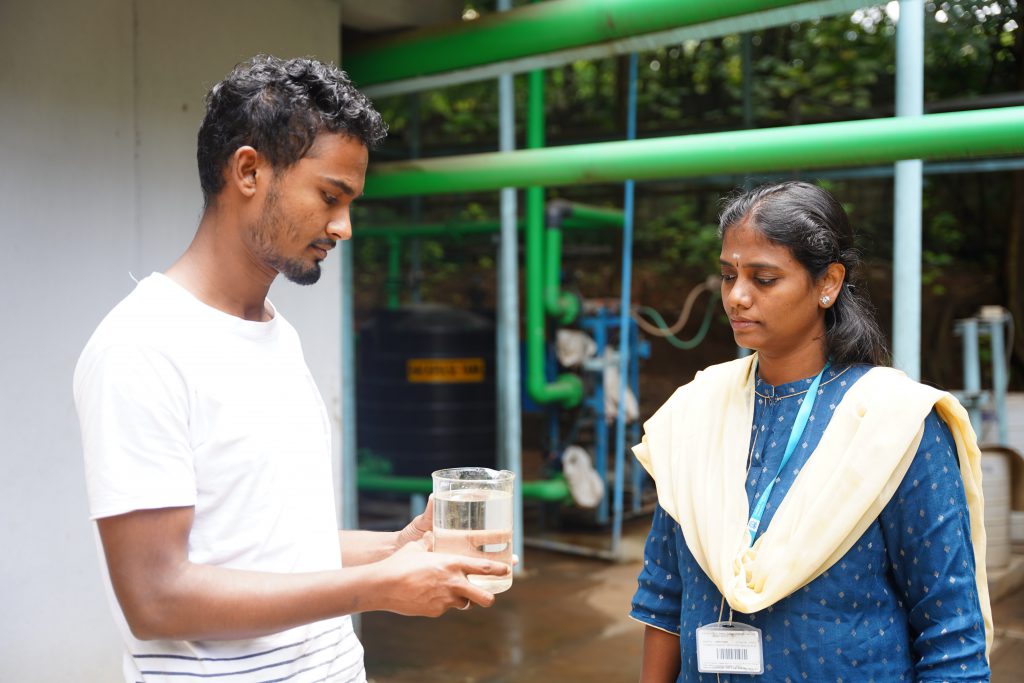
containing recycled water (Photo: KG Haridasan)
The second STP also treats about 250-300 m3 of wastewater per day. Apart from these two STPs, there is one Effluent Treatment Plant (ETP) near the Biological Sciences building and a new one coming up next to the new Chemical Sciences building.
Back at CCMD, the nanny informs her that her daughter is doing better and sleeping, and her son is back from school. The rest of the afternoon is spent in going over an agreement that needs to be signed with an architect for an upcoming project at one of the engineering departments. Radhika has to read through the terms and conditions thoroughly before it is uploaded on the tender website.
While she is working on the agreement, Bhavani, secretarial assistant at CCMD, stops by to check with her about the list of projects that will be put up for approval at the next Tendering Sub-Committee meeting. This committee meets every month to review and approve major civil projects on campus.
Apart from these committee meetings, Radhika and the other engineers also meet with the PE every Thursday to update him about the progress of their projects and the status of the complaints. She mentions that she misses the employee get-togethers and the professional development opportunities at her previous work place, but likes the fact that senior administrators are easily approachable at IISc. She feels happy whenever she sees a story about the Institute in the news.
By 5.30 pm, Radhika has finished making notes on the agreement and will discuss them with the site engineer tomorrow morning. After she heads home, the rest of the evening will pass by quickly as she spends time with her children, making dinner, watching some videos, and then tucking in early to get back up again at 4.30 am and begin a new work day.




